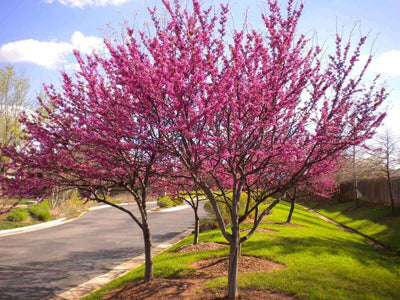Mcminnville, TN is Home to Many Tree Nurseries
Located in the heart of Tennessee's lush Warren County, McMinnville is a small community nestled among forests, nurseries, and sprawling farmland. For over 30 years, TN Nursery has been part of the McMinnville landscape, providing thousands of trees and plants to enhance spaces across this picturesque Middle Tennessee town. As a family-owned nursery and tree farm operating on the same McMinnville property since 1992, we’ve built generations of trust by offering exceptional variety, health, and care standards for trees destined to become treasured additions to local landscapes and gardens.
Best Selling Trees From TN Nursery, Mcminnville Tennessee
Tree Nursery McMinnville Tennessee
With tens of thousands of trees and nursery stock nurtured across acres of Tennessee farmland, TN Nursery offers an incredible breadth of variety specially selected to flourish in McMinnville and surrounding Middle TN climates. Homeowners can stand amongst rows of trees onsite or browse online to find perfect additions like:
- Flowering & Shade Trees: Dogwood, Redbud, Japanese Maple, Oak Varieties, Weeping Willows
- Evergreen Trees & Shrubs: Leyland Cypress, Arborvitae, Boxwoods, Holly Bushes
- Privacy Trees: Green Giant Arborvitae, Skyrocket Juniper, Norway Spruce and more
- Fruit Trees: Apple, Peach, Pear, Plum, Persimmon, Cherry Trees
- Native Plants: River Birch, Hydrangea, Blue Star Juniper, Black Gum, Beautyberry and more
Beyond trees, discover tropical planters, bamboo, vines, roses, shrubs, perennials, and garden decor tailored to prosper in Tennessee. With meticulous care fueling growth, McMinnville customers consistently rave about the unparalleled plant health, beauty, and longevity of additions from TN Nursery compared to big box stores.
Full-Service Planting for Stress-Free Installation
Getting trees from TN Nursery’s farm to your McMinnville landscape is just the beginning of the exceptional service we provide local customers. Take advantage of the nursery’s complete planting services to get additions properly positioned and established for healthy growth. Leave the heavy lifting to our team - we’ll amend soils, prepare planting holes for root balls upfront, install plants/trees with proper depth & spacing techniques, apply fertilizers or supplements the species may need, stake or train branches as needed, plus provide initial pruning.
Seeing that first-year post-planting is crucial, rely on TN Nursery’s ongoing guidance for watering schedules, fertilization, pruning tips, and regional plant care specific to the trees and nursery stock purchased. We take Tennessee gardening seriously and want to set every tree and plant - and gardener up for success!
Tree Nursery McMinnville TN Gardening Resources Tailored to Middle Tennessee
Beyond superb nursery stock and planting services, TN Nursery shares our 30+ years of Middle Tennessee gardening insights through:
- Seasonal Workshops: Attend our weekly in-person gardening workshops each season in McMinnville, covering regional soil prep, plant selection, garden design, maintenance, troubleshooting, and more.
- Online Idea Center: Access 100+ articles with gardening tips, plant pairing ideas, video guides, design inspiration, regional maintenance calendars, NKC information, and tools to ID plants.
- Ongoing Community - Join our active Facebook group to connect with local TN gardeners, get questions answered in real-time by our horticulture team, and share the beauty from around your landscape.
Call Us in McMinnville for the Premier Tree & Plant Shopping Experience
For three generations, TN Nursery has enhanced McMinnville landscapes with lush trees and nursery stock specially selected to let natural beauty shine. Call us in McMinnville at 931-123-4567 for the area’s premier tree and plant shopping with pickup/delivery, or visit our easy-to-navigate online nursery store. TN Nursery is where Middle Tennessee gardening dreams take root!




